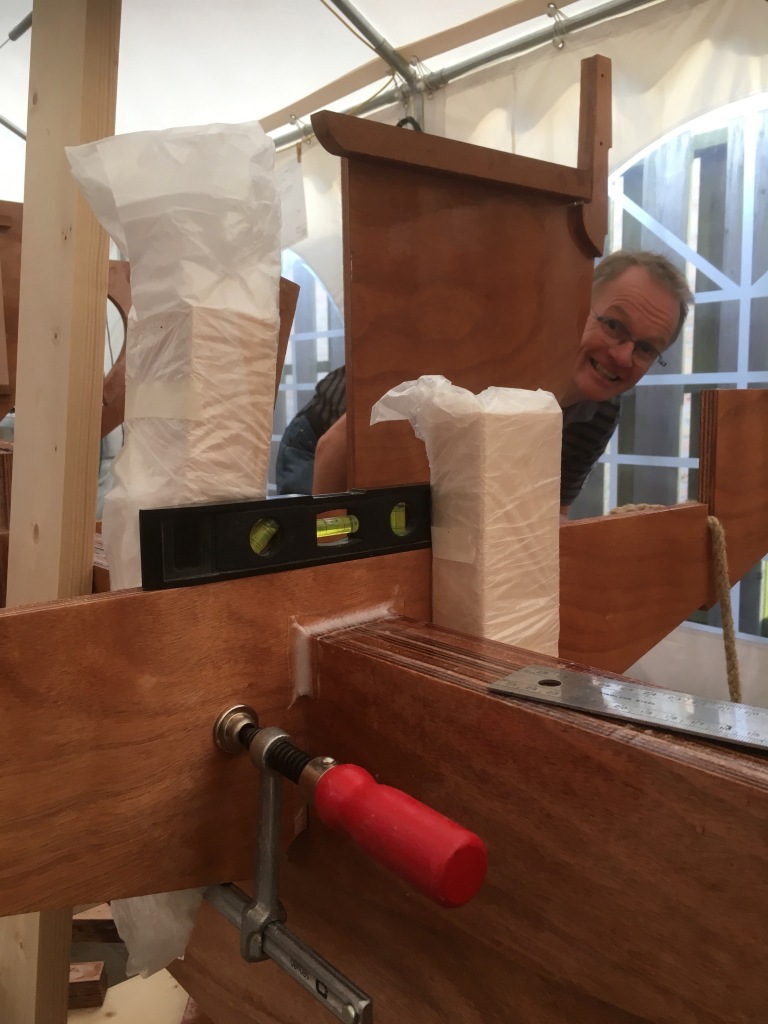Didn’t have much time to work on the boat the past two weeks, but this weekend I found some time to work on the moisture problem. After some research on the net I decided to go with two measures; “insulating” the tent with a second layer and drying the air with a machine.
I found a cheap used air dryer and ordered some bubble-plastic. This is the result after a few hours of work;

I dressed the tent on the inside with lateral strokes of 1 meter wide bubble plastic. When the whole length of the tent is done I’ll join the strokes with some tape.

In the aft part of tent two more strokes are needed to cover roof and side walls. After that I’ll do the short sides.

The used air dryer. I’ve let it run some time and managed to drop the relative humidity a bit. Hopefully it will perform better once the bubble plastic is done….keep you posted!
















